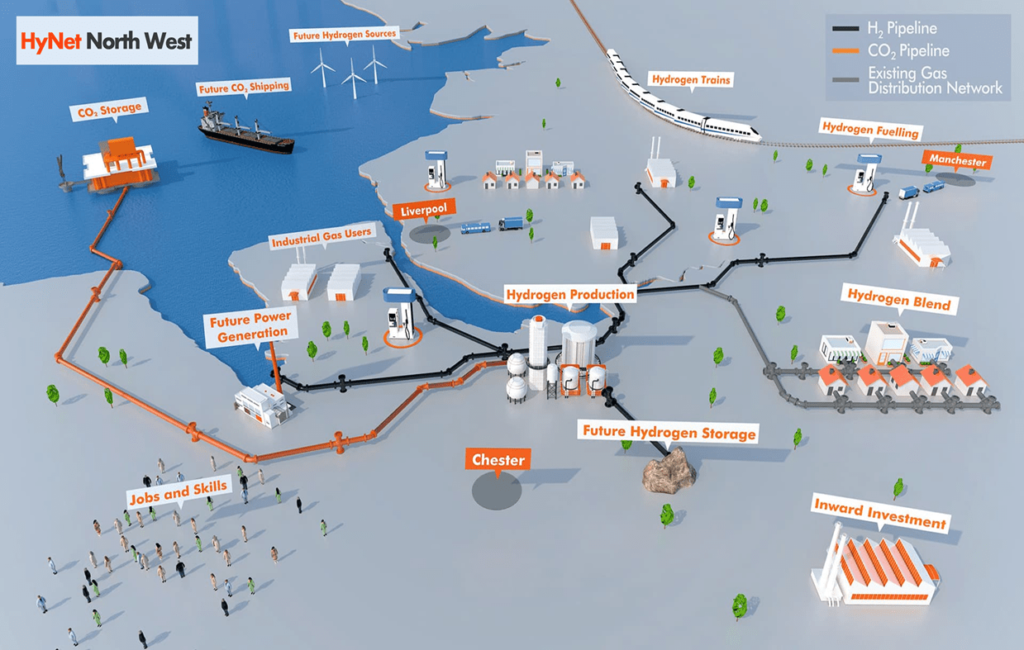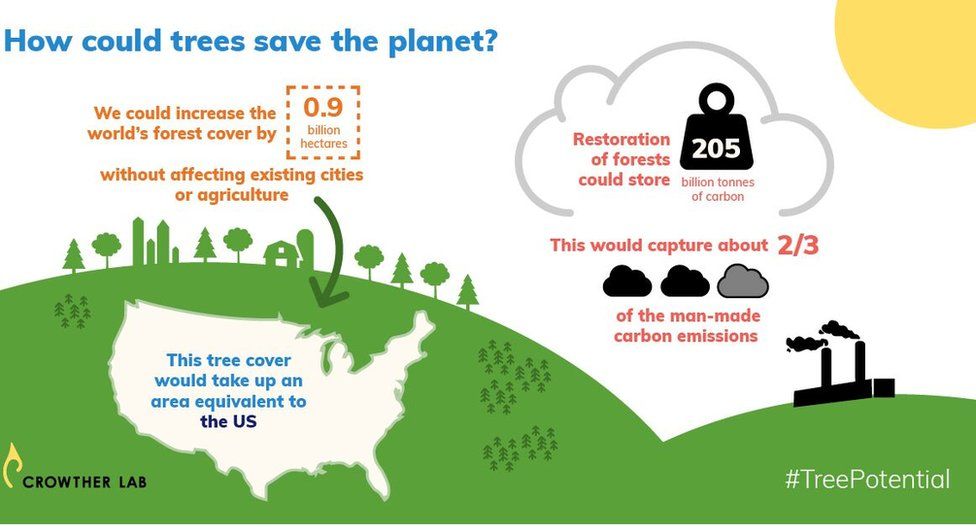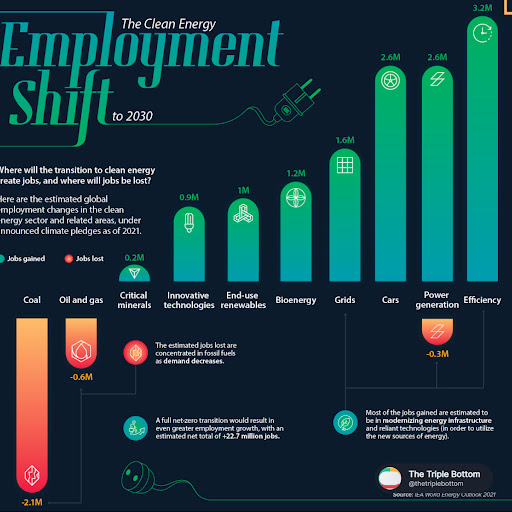
Happy Tuesday. Some great news to help you with the post-Easter blues, we’re collaborating with sustainability newsletter: Keep Cool, the home base for climate tech entrepreneurs, operators, investors, and climate curious and conscious people. They take deep dives into stellar climate tech and companies.
In today’s edition:
⛽️ A hydrogen hub in England
🌳 Supertrees sequester more carbon
💼 Jobs in the energy transition

UK manufactures pledge to power business with locally sourced Hydrogen
The situ: Manufacturing and production are key drivers of economic growth. Yet, emissions from the supply chain are 11x higher than operational emissions.
Enter HyNet North West: An initiative backed by companies like Unilever, PepsiCo and Kelloggs to develop a low-carbon industrial centre in northwest England by rapidly scaling decarbonising solutions, such as hydrogen fuel and carbon capture tech.
Off to a great start… Unilever and Pilkington Glass have started using hydrogen to power their production processes as part of the initiative.
The logistics: There are also plans to set up a hydrogen facility in theregion which will create, store and deliver the fuel to companies = improve supply-chain efficiency.
Why’s this important? If theinitiative and facility combo is a success, adoption of hydrogen further afield can be accelerated by setting an example for other areas.

From calories to climate: Denmark’s regulated climate certification for food products
The Danish Government just announced a world-first – thecreation of a government-regulated sustainability label that shows thegreenhouse gas (GHG) emissions of individual food products. Food production is responsible for 25% of the world’s GHG emissions, so climate labelling is critical to portray individual foods’ impact
Our view: informing consumers of climate impacts is critical but may not be enough for enabling sustainable choices. Faced with inflation, consumer choice will likely remain governed by pricing. Some groups are pushing for a CO2 tax, where the climate impact of food items is reflected in their pricing.
BlackRock ups the ante on climate disclosure
BlackRock, the world’s biggest asset manager, has projected by 2030 at least 75% of its investments will be in companies and governments with scientific-backed targets to cut greenhouse gases to net zero – it’s the first time BlackRock has predicted how its portfolio could look in 2030.
🤖 Future of Tech (1-minute read)
Tech is making trees “better” at carbon removal
The demand: The recent IPCC report makes it clear that solutions to sequester CO2 is going to be crucial to combat climate change.
Solutions… Startup, Living Carbon, is taking nature-based solutions to the extreme by genetically engineering trees that store more carbon.
Not new? Engineering plants isn’t new – it’s been happening in agriculture for decades. It’s theapplication that is novel by turning the biological innovation towards carbon sequestration. Find out more about the biological process being re-engineered here.
Controversy… as genetically engineered trees being released into the wild can have unintended ecological consequences. To prevent this, Living Carbon is working with trees that don’t produce pollen – limiting the genetic material from edited plants mixing with wild trees.

Japan’s largest sushi chain takes the leap – teaming with a cell-grown seafood group
US-based cell-cultured seafood producer BlueNalu is partnering with sushi restaurant operator Food & Life Companies (F&LC) to develop an alternative to bluefin tuna, by growing it from cells cultured in a lab (a ethical and more environmentally friendly alternative). Bluefin tuna is prized in Japan, where an estimated 80% of theglobal supply is consumed. It commands premium pricing for its texture and flavour – demonstrating just how far lab-grown meat has come. Whilst lab-grown meat is only approved in Singapore currently, this deal is expected to result in regulatory approval from Japan and South Korea.
💡 Deep Dive (1-minute read)
Where will the transition to clean energy create and lose jobs?
The clean energy transition will undoubtedly have an impact on employment. New sources of power don’t just require new equipment, they also require people to operate them. And as demand for cleaner fuels shifts attention away from fossil fuels, it’s likely there will be a shift in jobs. The IEA’s World Energy Outlook predicts the following:
-
Net-Positive Employment: In total, the clean energy transition is expected to generate 10.3 million net new jobs around the world by 2030.
-
Job Hot Spots: The largest expected job gains are in electrical efficiency, power generation, and theautomotive sector. Combined with modernizing the grid, they make up 75% of the 13.3 million in new job gains expected.
-
Innovation: Comparatively, new energy sources like bioenergy, end-use renewables, and supply chain resources combine for 3.3 million jobs. That offsets the2.7 million jobs expected to be lost in fossil fuel sectors.
-
Just the start: These expected employment changes are under announced climate pledges as of 2021. The IEA has calculated that in a full net-zero clean energy transition, the estimated quantity of jobs will be a net addition of 22.7 million.
The How?
-
Policy: re-skilling and upskilling required as part of the green transition needs to be “pro-active”. Waiting until after jobs have been lost in carbon-intensive industries will not be enough. In the EU this is highlighted in the European Green Deal – and suggests reskilling programmes will be supported by the European Social Fund.
-
Tech: To increase awareness amongst workers in legacy sectors e.g.Iron & Earth – a website to match fossil fuel sectors with training and new green job openings relating to their current skills
- Recruiters: An increase in purpose-driven recruitment firms helping match the next crop of green talent with companies seeking their skills e.g. Placeable.

💭 Little Bytes
Quote: “We expect to see millions of new jobs created globally in thenext decade driven by new climate policies and commitments.” LinkedIn chief executive Ryan Roslansky.
Stat: Canada’s greenhouse gas emissions fell by 9% during 2020(the equivalent to taking 20million cars off the road).
Watch: Flying V-plane could be thefuture of net-zero aviation.
🗞 In other news…
-
Nissan and NASA team up on 15-minute EV charging
-
California runs on nearly 100% clean energy for first time
-
Google datacentres use 2x as much electricity as San Francisco, so the tech giant has released plans to use 100% carbon-free energy by 2030.
-
Tushcop, a Kenyan startup, is using innovative approaches and tech to make groceries more affordable
- Plans to develop Ireland’s firsthydrogen valley, a regional ecosystem that links H2 research, production, and distribution with end-users.




